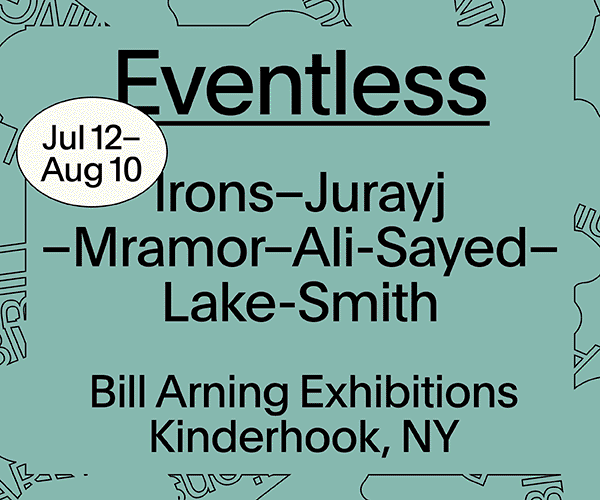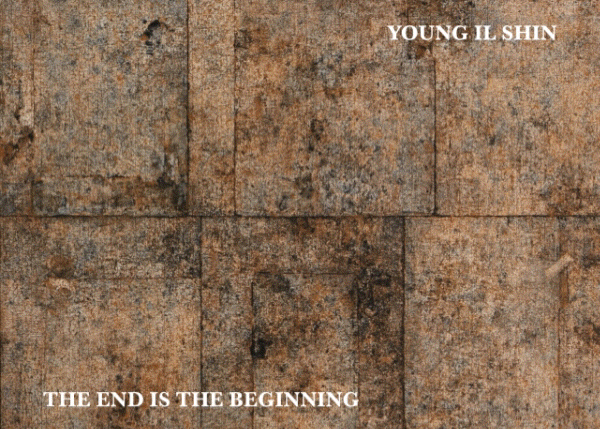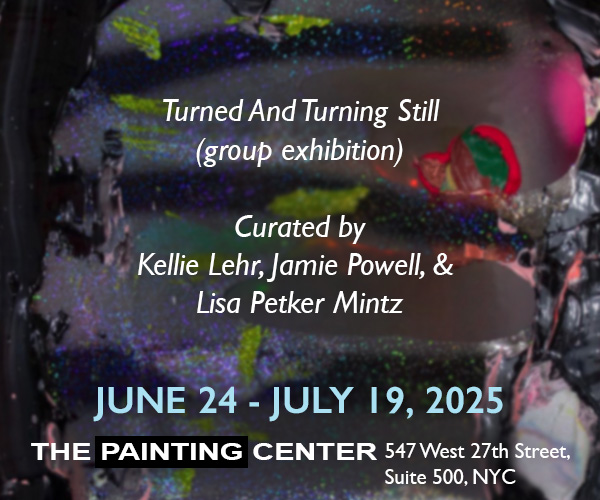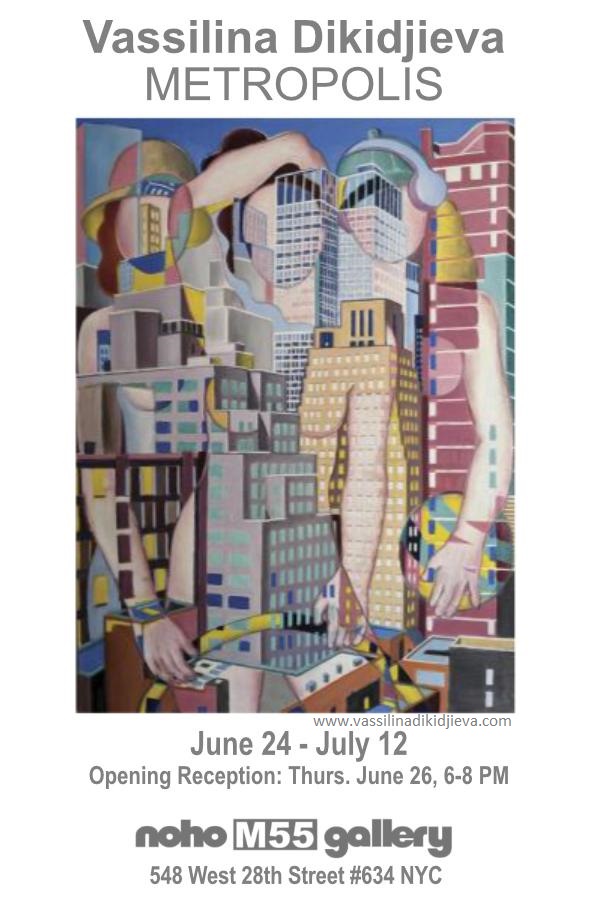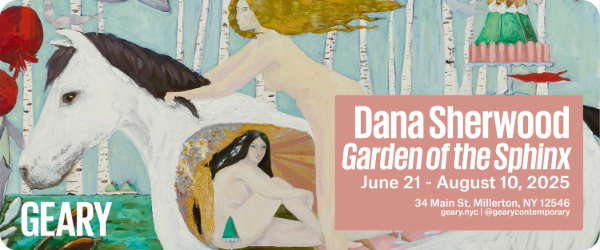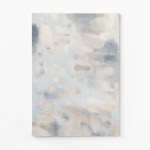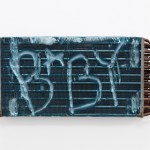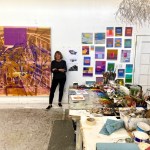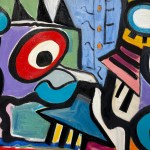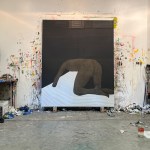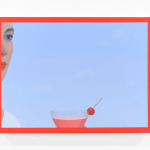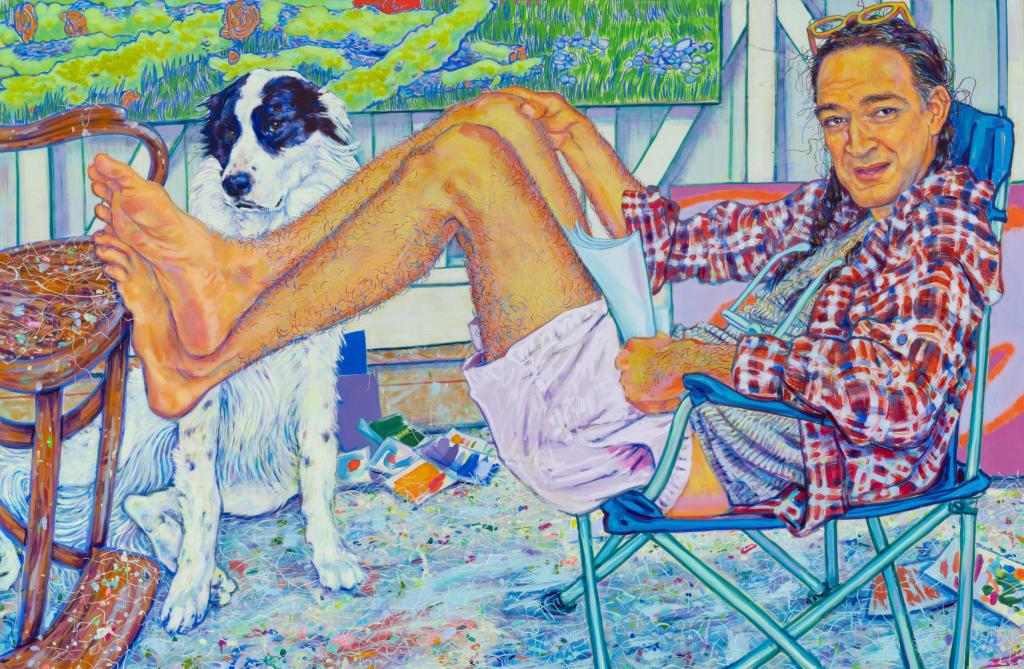
Contributed by Jonathan Stevenson / At first blush, Hope Gangloff’s remarkable new paintings, on view at Susan Inglett Gallery and largely set in a notional rustic retreat, could be mistaken for blown-up greeting cards for vacationing hipsters, perhaps with a sly nod to David Hockney. Pristinely applying acrylic paint, she crafts them like illustrations, and they are unabashedly luminous. But the ecstatic vibe that characteristically radiates from that quality, though present, is winkingly deceptive. While Gangloff paints friends and actively cherishes the intimate golden moment, existential concerns burn through her work.
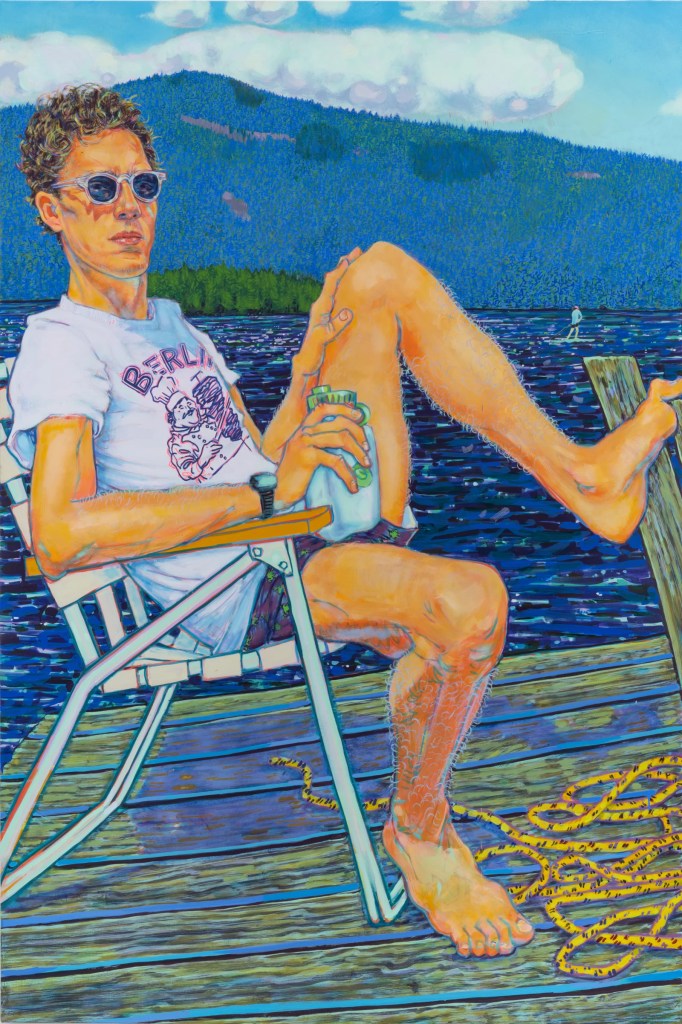
The young man in Arnold (Lehman-Richter), sipping a drink on a lake-borne raft against a vaulting mountain in an apparent idyll, should by the numbers seem charmed; instead, he looks eminently perishable. The effect may turn on Gangloff’s audacious mark-making and precision-targeted color, which compel scrutiny and deconstruction. The shimmering water, ostensibly blue, is full of black; the guy’s golden skin is in fact sallow; the blonde highlights in his hair are greenish; his dark shades betray lugubrious eyes. On that evidence, there’s as much chance that he’s an ailing refugee or a troubled fugitive as an unencumbered beautiful person. Arguably something similar goes for the two magicians with thousand-yard stares in Mathhew (Holtzclaw) & Prakash (Puru), which features an incongruously explicit cue by way of cigarette smoke culminating in a floating skull.


The artist’s interest in tricksters is worth noting. In Gangloff’s hands, what might scan as kitsch is not a vacuum for nuance, as Clement Greenberg would have it, but a gateway to it. Carefully chosen content and exacting composition as well as exquisite technique illuminate subtle vulnerabilities in the people she depicts. The older man on the raft in James (Case-Leal) smokes wistfully while braiding his unruly hair. Captured again with a doleful dog in Waggie and James, inside a sloppy room in his boxers, he seems under the weather, struggling for poise. Gangloff establishes the wider context of mortality in offbeat landscapes like Lil Nana at Lake George, situating an overturned skiff next to a detached outboard motor and gasoline canister against balding trees, and Dianthus, fronting a cottage in need of repair with an overgrown patch of flowers, and then the desultory passage of time in gently perverse still lifes like Ceramics, arraying a motley group of mugs on a shelf, most empty, some spewing plants, a few upside-down. Expanding the ambit to the generational and the disruptively spectacular, respectively, are “Bittersweet” Barn and Spring Porch.
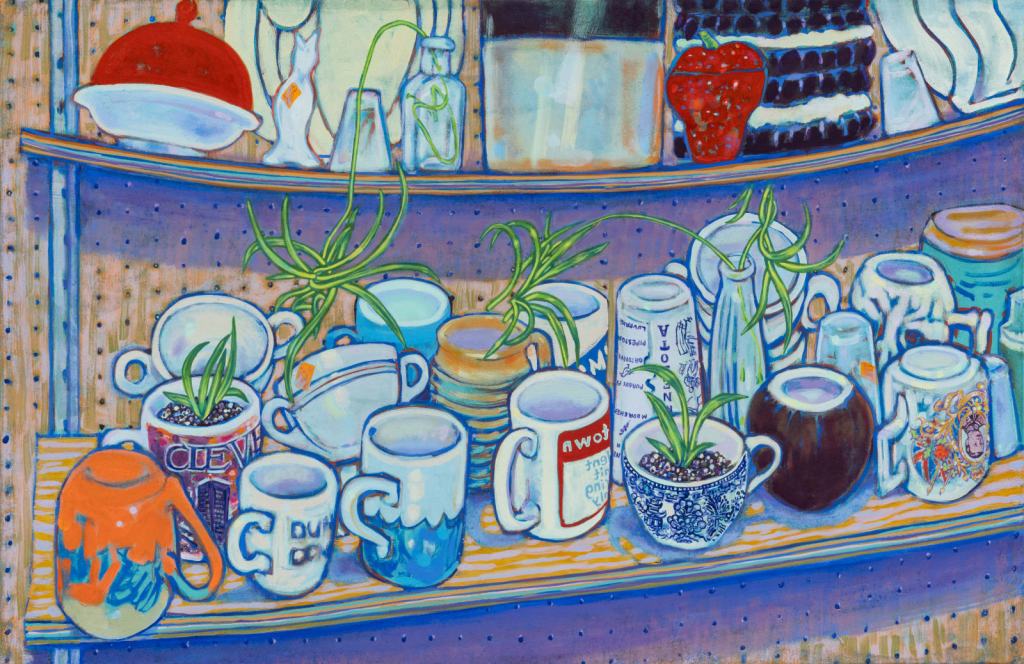
Hope Gangloff, Ceramics, 2025, acrylic on linen, 30 x 48 inches (Copyright the artist)
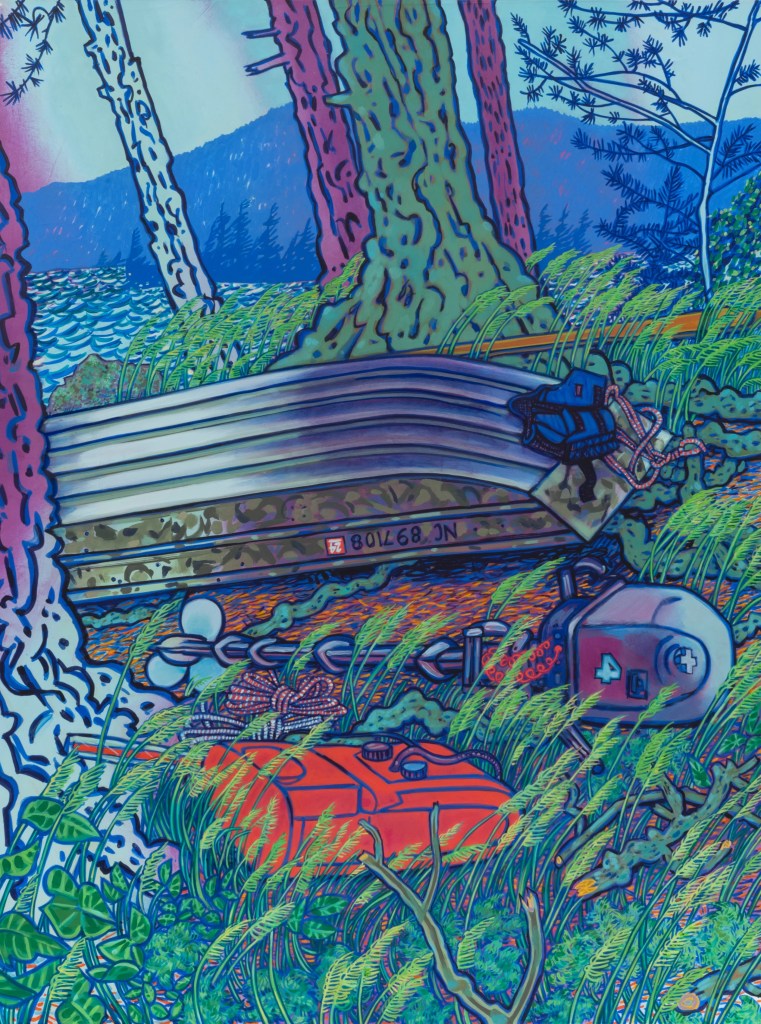
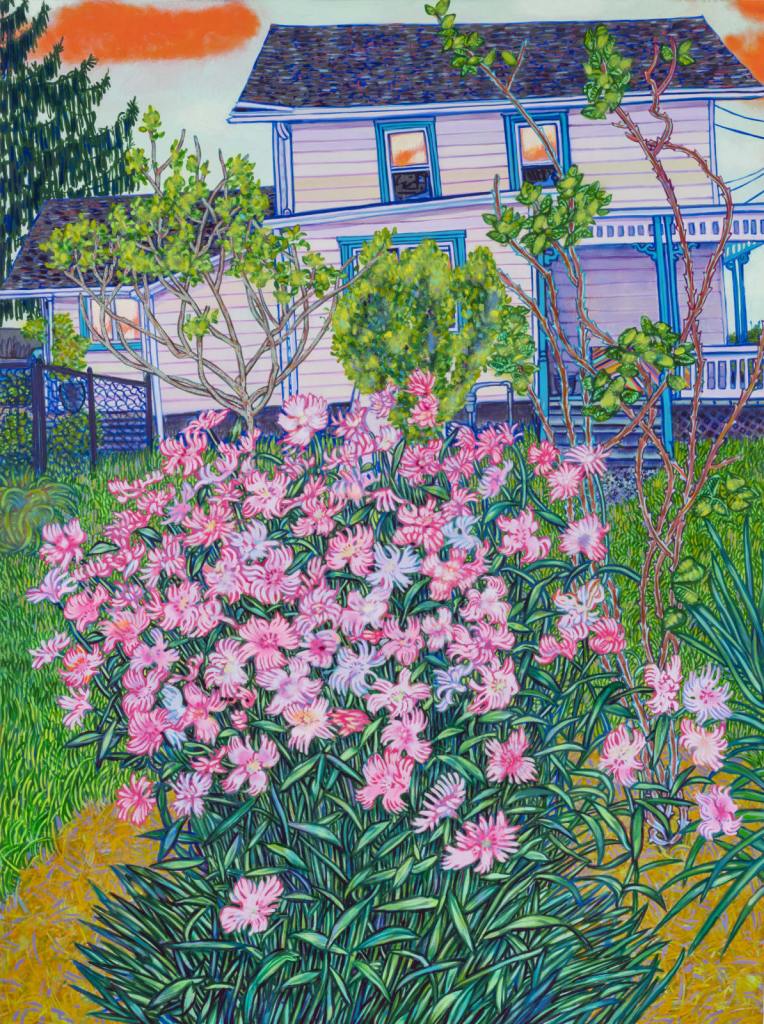
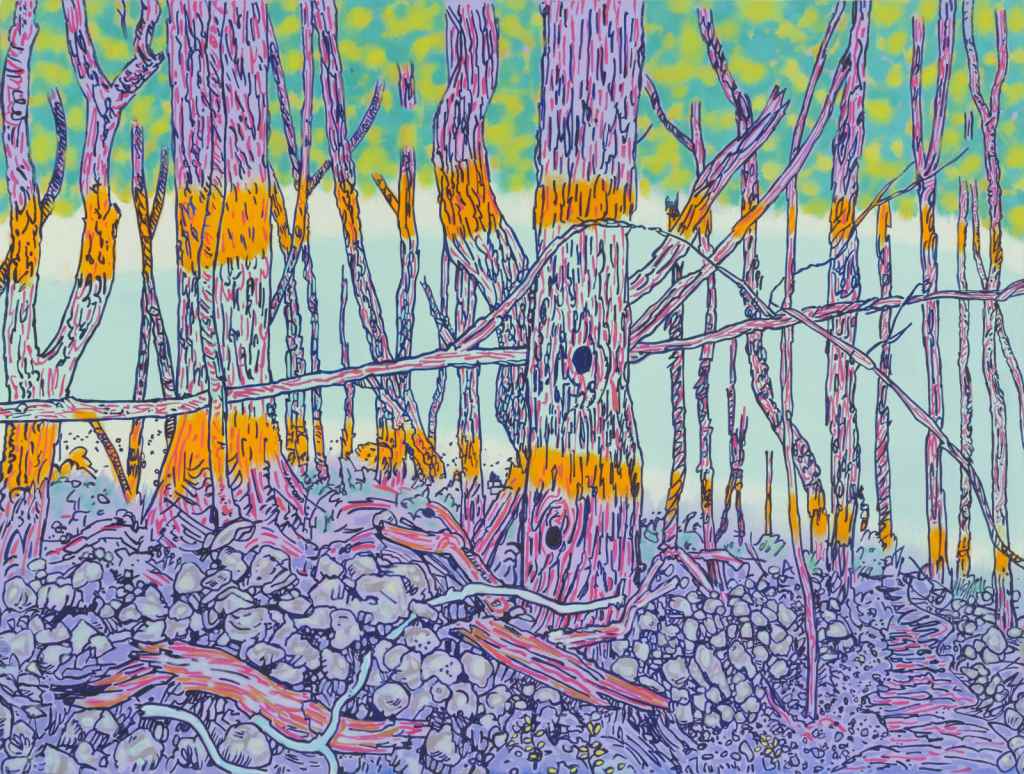
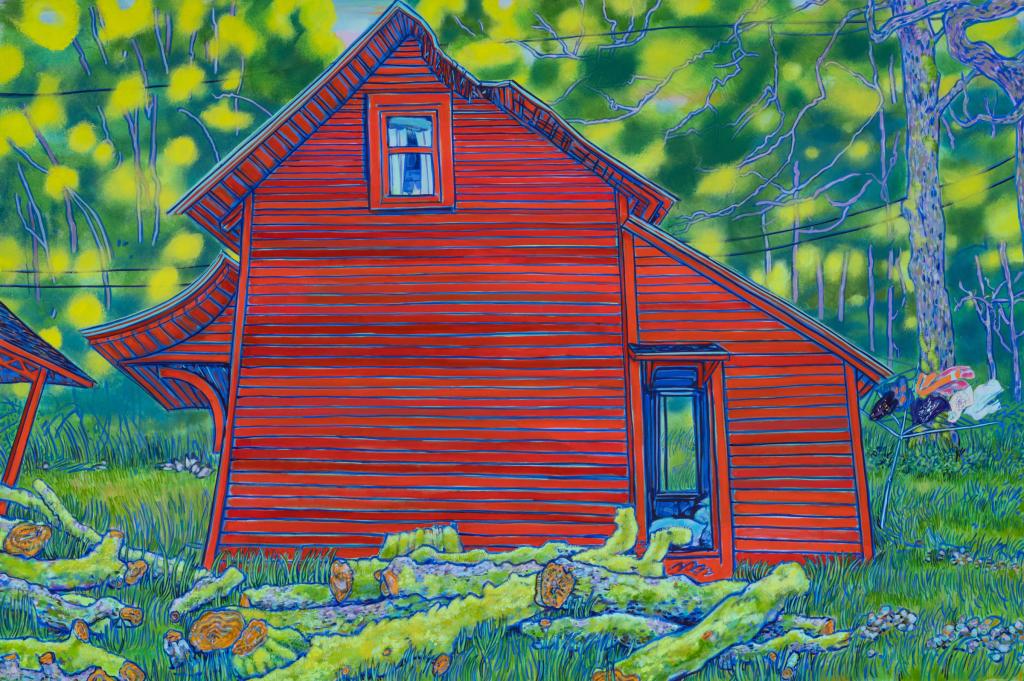
The beguiling landscape Hidden Brook at Dusk might encapsulate the worldview that underpins Gangloff’s aesthetic cunning. Eerily passive trees and vaguely predatory vines catch broken light on a riverbank; however pastoral and lovely the scene, the water moves, night falls, dread courses alongside hope. She and the gallery presumably elected not to give the show an evocative title in part out of confidence in its deep thematic integrity and the power of her visual insinuations. The fact that her modus operandi involves wrongfooting viewers, or at least checking their expectations, makes that a daring choice. It pays off handsomely.
“Hope Gangloff,” Susan Inglett Gallery, 522 West 24th Street, New York, NY. Through June 7, 2025.
About the author: Jonathan Stevenson is a New York-based policy analyst, editor, and writer, contributing to the New York Times, the New York Review of Books, and Politico, among other publications, and a regular contributor to Two Coats of Paint.

